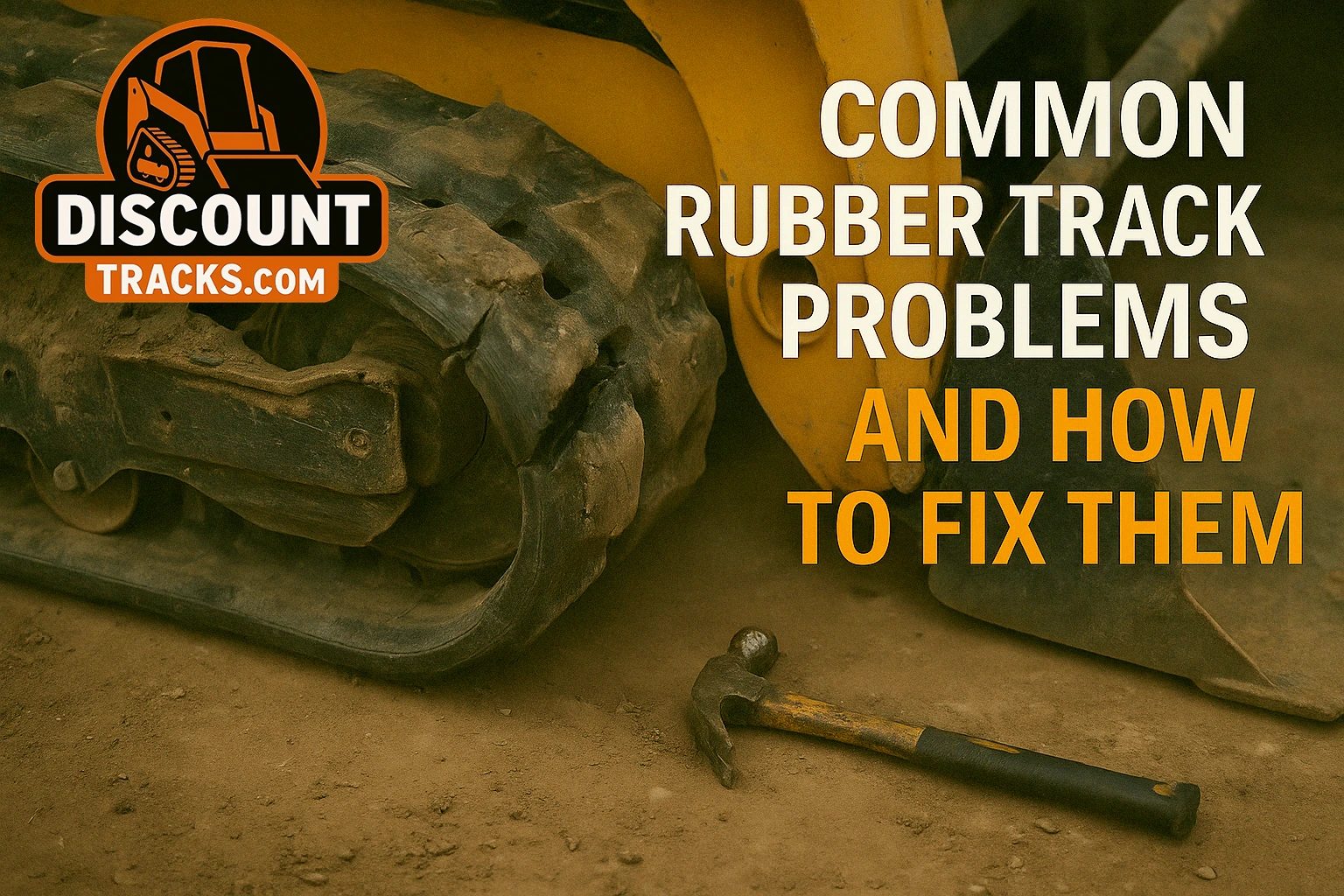Introduction
When your machine suddenly starts losing performance or comes to a grinding halt, a rubber track issue is often the culprit. But identifying exactly what’s wrong—and how to fix it—can save time, money, and frustration.
Understanding the root cause of common rubber track problems is essential for selecting the right fix. Some issues can be resolved with simple adjustments, while others may signal it’s time for a replacement.
This guide will walk you through the most frequent rubber track issues, explain what causes them, and offer practical solutions. You’ll also learn when damage is beyond repair and replacement is the best option.
Why Identifying Track Problems Early Matters
Ignoring early warning signs can turn a minor issue into a major failure. The consequences include:
- Sudden de-tracking that halts operations.
- Damaged undercarriage components.
- Costly downtime and repair bills.
- Unsafe working conditions.
Catching and fixing issues early prevents these risks and extends your track lifespan.
Diagnosing Common Rubber Track Issues & Potential Solutions
Problem 1: De-tracking (Track Coming Off)
- Symptoms: Track slips off the idler or sprocket.
- Causes: Loose tension, worn sprockets or idlers, debris buildup, harsh terrain, or operator habits.
- Fix: Adjust tension per your manual. Clean out debris. Inspect undercarriage and replace worn parts. Use wider turns to reduce lateral stress.
- Replace If: Track or components are too damaged from repeated de-tracking.
Problem 2: Cuts, Gouges, and Punctures
- Symptoms: Visible slices, holes, or embedded objects.
- Causes: Contact with rebar, metal, or sharp rocks.
- Fix: Surface cuts can be monitored. Deep cuts should be inspected for cord exposure. Remove foreign objects carefully.
- Replace If: Cords are exposed or track structure is compromised.
Problem 3: Chunking (Tread Lugs Tearing Off)
- Symptoms: Missing tread blocks or sections.
- Causes: Impacts, curb strikes, or poor-quality rubber.
- Fix: Avoid impacts. Use tougher tread patterns if necessary.
- Replace If: Chunking is extensive or traction is compromised.
Problem 4: Cracking (Surface or Deep)
- Symptoms: Splits on the track surface or sidewalls.
- Causes: UV exposure, age, cold, or prolonged use under improper tension.
- Fix: Minor surface cracks are cosmetic. Deeper cracks usually indicate structural failure.
- Replace If: Cracks reach cords or affect track performance.
Problem 5: Uneven or Accelerated Tread Wear
- Symptoms: One side of the track wears faster or tread wears down rapidly.
- Causes: Misalignment, tension issues, worn undercarriage, or aggressive operation.
- Fix: Adjust tension, inspect/replace worn parts, adjust operator habits.
- Replace If: Tread is worn below effective traction or wear continues despite fixes.
Problem 6: Drive Lug / Embed Damage or Wear
- Symptoms: Worn, cracked, or missing internal drive lugs.
- Causes: Worn sprockets, loose tension, poor bonding.
- Fix: Replace worn sprockets to prevent damage. Lugs cannot be repaired.
- Replace If: Drive lugs are severely worn or performance is compromised.
Prevention is the Best Fix: Link to Maintenance
Most common rubber track problems can be avoided with proactive care:
- Regular cleaning
- Correct tensioning
- Undercarriage inspection
(See our guides on track tensioning, undercarriage lubrication, and track cleaning.)
When Replacement is Necessary: Choosing Value with Discount Tracks
Some issues—like exposed cords, deep cracks, or major chunking—can’t be fixed. In these cases, replacement is your best option.
Discount Tracks provides high-quality, long-lasting replacement tracks designed to resist many of the problems listed above. Our tracks combine durability, reliability, and great value.
Conclusion
Understanding common rubber track problems and how to fix them keeps your machine running and your costs down.
Troubleshooting rubber tracks early helps avoid larger failures, prevent downtime, and improve safety.
Need a replacement? Explore our wide selection of durable, high-value tracks at DiscountTracks.com or contact our team to find the right fit.


